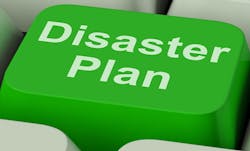Business Continuity and Disaster Recovery: Breaking Down the Differences
In this edition of Voices of the Industry, Josh Moody of FORTRUST explains how there are key differences in the terms ‘business continuity’ and ‘disaster recovery.’
Throughout the technology and enterprise industries, the terms disaster recovery and business continuity are often used interchangeably. However, this view shortchanges what each strategy means, as well as how they can be valuable for a business.
There is a considerable difference between disaster recovery and business continuity, and treating each approach separately can be very beneficial for today’s companies. But just what exactly is the distinction, and why does it make sense to think of these two strategies separately?
Defining to Discover the Difference
While both strategies encompass how businesses react to an issue or outage within the IT infrastructure, business continuity is vastly different from disaster recovery.
Data Center Knowledge contributor Jarrett Potts noted that it can be helpful to think of disaster recovery as a small subset of business continuity. In this way, disaster recovery, or the processes and procedures of backing up data specifically for recovery use in the event of a disaster, is just one part of business continuity.
Having a plan in place to recover data after a disaster is only one small part of business continuity.
The broader business continuity category includes the overall planning, management and supervision with the goal of ensuring that the business’s IT functions can continue in the event of a disaster.
“Business continuity is a completely different process. First, it is not data centric; it is business centric,” Potts explained. “The whole point of business continuity is to continue to do business during a failure or disaster. In basic terms, it means that when a failure or disaster happens, that data is still accessible with little to no downtime.”
CSO contributor Derek Slater echoed this viewpoint, noting that disaster recovery refers to the process of recovering and resuming company activities after an impactful event has already taken place. Business continuity, on the other hand, is “a more comprehensive approach,” Slater noted, which will help ensure that all areas of the organization can continue not just in the face of a disaster, but in the event of smaller issues like problems in the supply chain or the absence of a key staff member.
Why separate disaster recovery and business continuity?
It’s not only helpful for businesses to consider these two approaches separately, but critical for them to do so as they refer to different processes and procedures. As noted by Potts, disaster recovery mainly focuses on the company’s key data and the ability to recover this information should an outage, attack or storm take place. Business continuity, on the other hand, refers to a larger set of processes, and includes the essential hardware and software technologies the organization uses.
In other words, disaster recovery planning ensures that the company’s data – including inventory, client details, databases and other sources of information – is available for recovery due to an issue or outage within a key system. These plans typically don’t include what technology will be utilized during the period of time that main systems are unavailable. These details, TechTarget contributor Kevin Beaver pointed out, are a part of business continuity.
“With business continuity, you have systems in place that ‘fail over’ and allow key systems to stay up and running and [keep] the business afloat,” Beaver wrote.
“Although disaster recovery and business continuity plans can intersect, it is essential that these processes, procedures and considerations not overlap.”
In this way, it’s important to keep these plans separate in order to fully and properly address data restoration with disaster recovery, and technology failover with business continuity.
Because continuity is a broader term, it can also bring up additional considerations that are not part of disaster recovery, Potts noted. These include:
- What should be recovered first in order to continue core business processes?
- What customer needs should be addressed to ensure stability?
- What will business partners need to guarantee the continued order, fulfillment and delivery processes?
- What will be required to maintain vendor relationships?
In this way, business continuity should be an ongoing process, where decision-makers not only consider the internal data and workings of their business, but how an event might impact their clients and partners as well. Although disaster recovery is also ongoing, this solely refers to the business ensuring that the most recent versions of data are backed up.
Maintaining the Separation
Although disaster recovery and business continuity plans can intersect, it is essential that these processes, procedures and considerations not overlap. Decision-makers should maintain the separation between these strategies to ensure that the factors and components included in each one can be fully addressed.
“Recovery of data may well be the only issue that the bulk of IT managers and C-level officers have time to address,” Potts wrote. “It’s a good start, but not the whole story. You must understand the ‘what’ and ‘how’ in order to get your data back in operation.”
With up-to-date and robust disaster recovery plans, companies have a better chance at success for business continuity during and following a disaster.
Josh Moody joined FORTRUST in 2008. As Senior Vice President of Sales and Marketing, he is responsible for developing, managing and executing the overall sales strategy for FORTRUST. Josh brings more than 18 years of experience in the information technology field, including developing and executing strategic planning, management, customer relations, and vendor/partner relationships.


